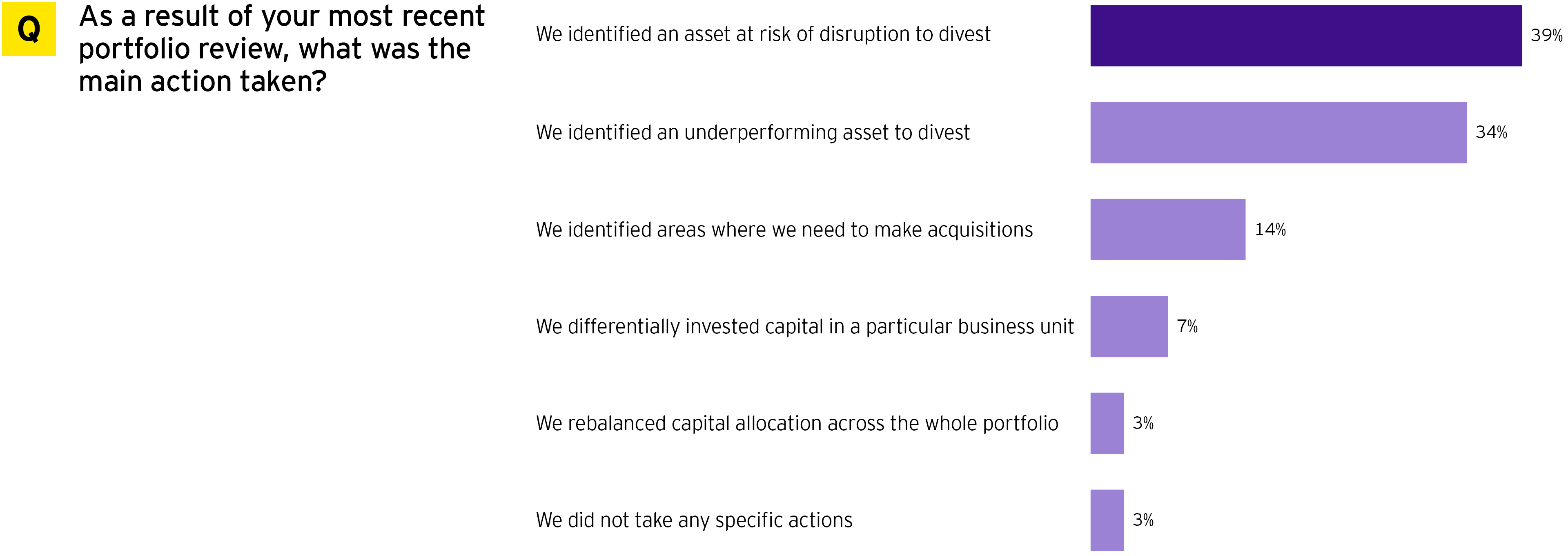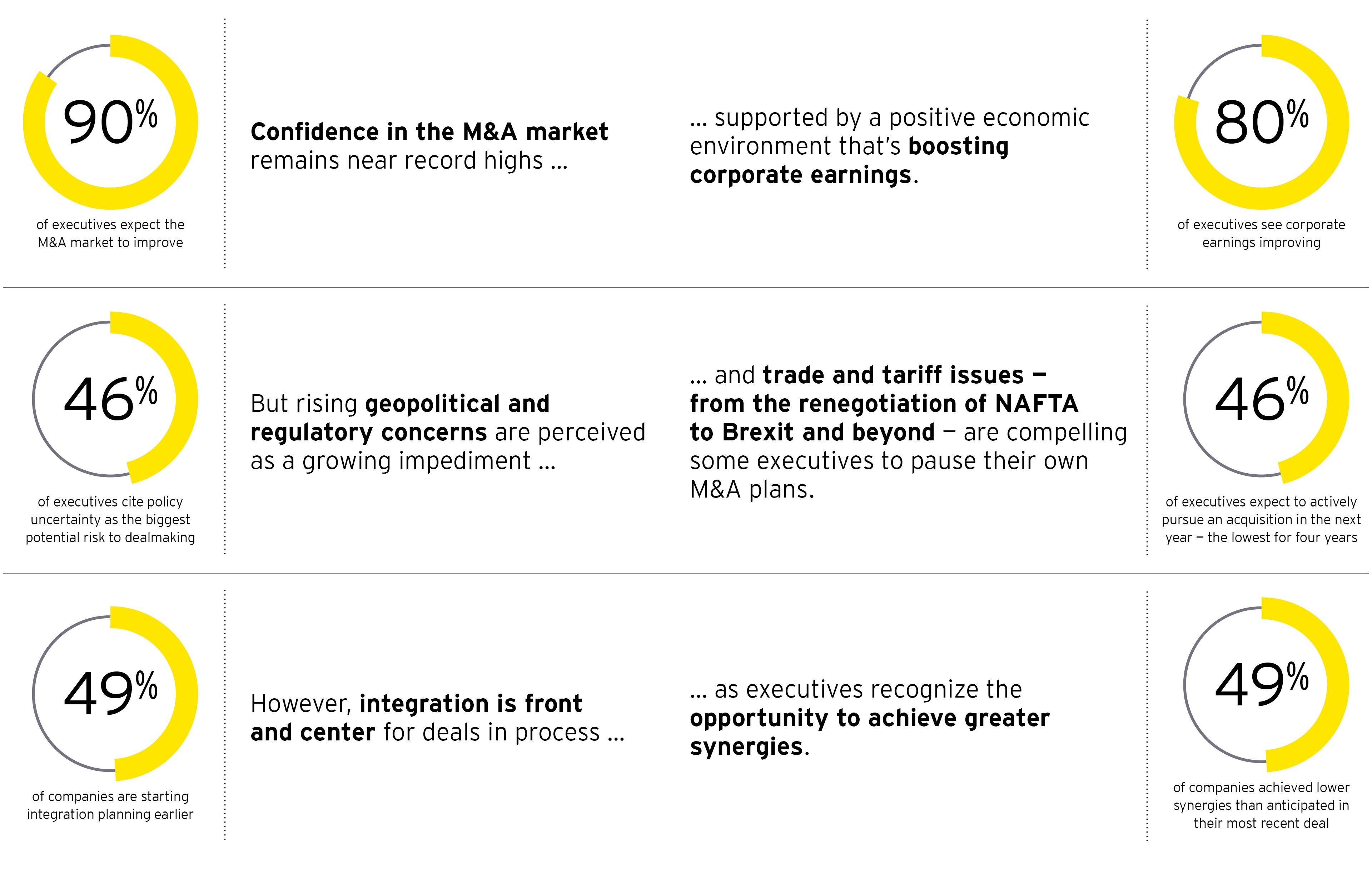
Chapter 1
Corporate strategy and portfolio transformation
Heightened risks of disruption and increasing policy uncertainty accelerating portfolio reviews and potential divestitures
As external uncertainties rise, executives are increasing the frequency of their own internal portfolio analysis.
While disruption from changing consumer preferences driven by technology is now ever present, potential changes to global trade policies are becoming an increasingly pressing issue in company boardrooms.
The pressure from investors for companies to maintain or improve both margins and payouts has intensified during the current cycle. Investors, both activist and institutional, are demanding even more during a sustained period of record profitability and corporate earnings growth.
Executives indicate they are accelerating their portfolio reviews. A critical component of this will be understanding the resilience of their current supply and operational eco-systems. This will help them to understand the potential for policy changes that may disrupt these critical chains. They will be looking to build in the agility and flexibility to adjust and pivot to respond to changes that may impact their access to suppliers and customers — even if that means reinventing their value chains to maintain business as usual.

With pressure from investors to maintain margins, companies are looking to redefine their portfolio.
Companies continue to look at their portfolios and align their strategy and growth prospects. This focus on recycling capital through divestitures may likely underpin deal flow in the next 12 to 24 months. Those companies that balance acquisitions and divestitures generally outperform those that focus solely on either acquisitions or divestitures.
This focus on recycling capital through divestitures may likely underpin deal flow in the next 12 to 24 months.

With talent hard to secure, executives are turning inside for competitive advantage.
Executives in our survey recognize that when it comes to growth and innovation, the risks and rewards associated with an organization’s talent are among the most critical areas.
With many major economies running at near-full employment, there is a clear focus on the need to retain and motivate their existing talent.
Having a flexible, well-trained and rewarded workforce is key to an organization’s ability to capitalize on changes in customer buying patterns and emerging technology. Companies need to be able to pivot quickly in response to new technologies or competitive disruption.
From building a culture where innovation thrives, to defining the company’s purpose, to retraining workers to meet the demands of evolving business models, a company’s people strategy is critical to competitive strength.


Chapter 2
Key M&A takeaways
8 critical questions executives should ask themselves
Below are the critical questions executives should ask themselves to drive better M&A in today’s deal economy.
Global Capital Confidence Barometer: key highlights
Summary
Our latest M&A report notes that regulation, trade and tariffs may foster a deal hiatus for some, while many others move forward with acquisition plans. Download the full report (pdf).


